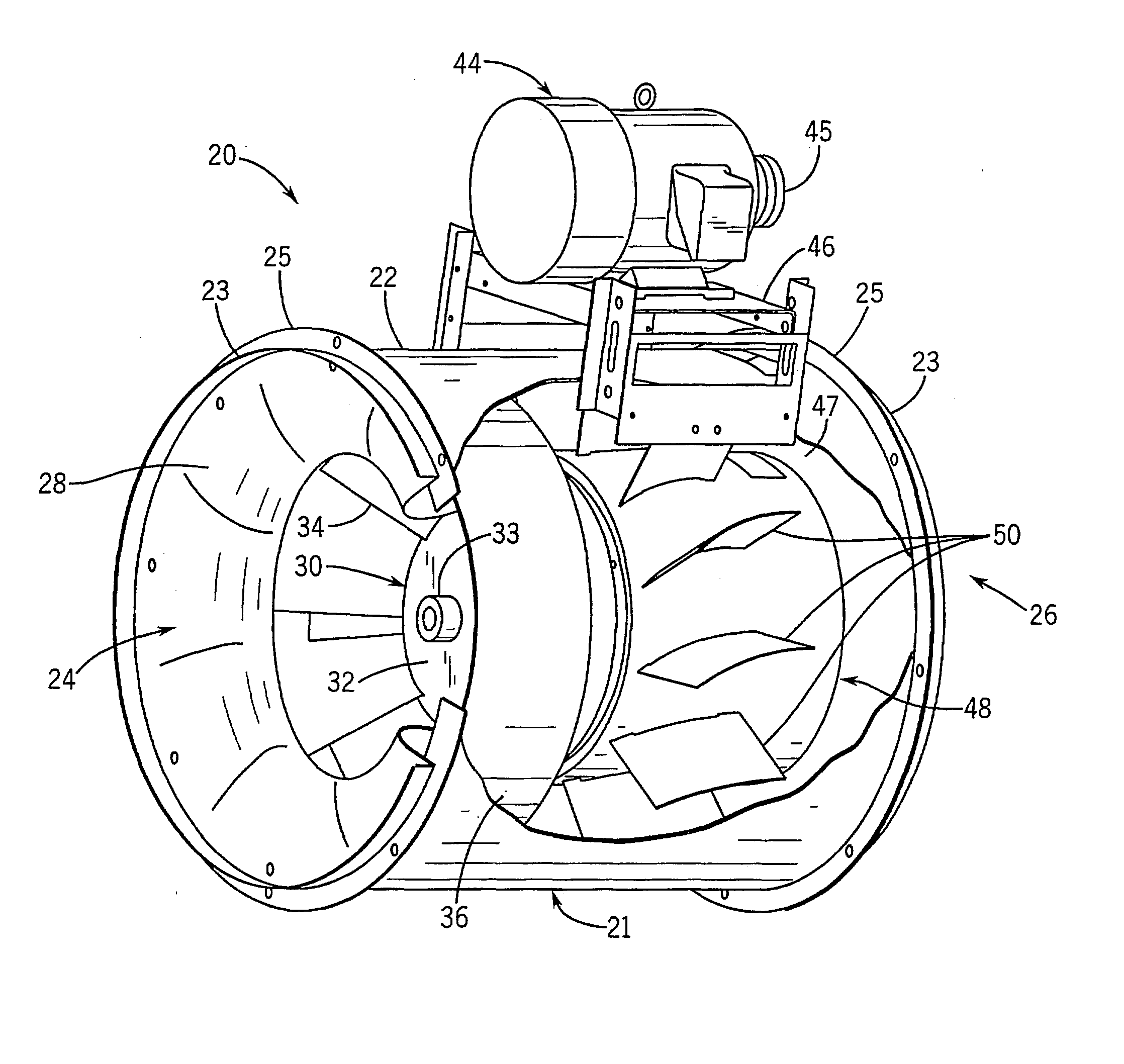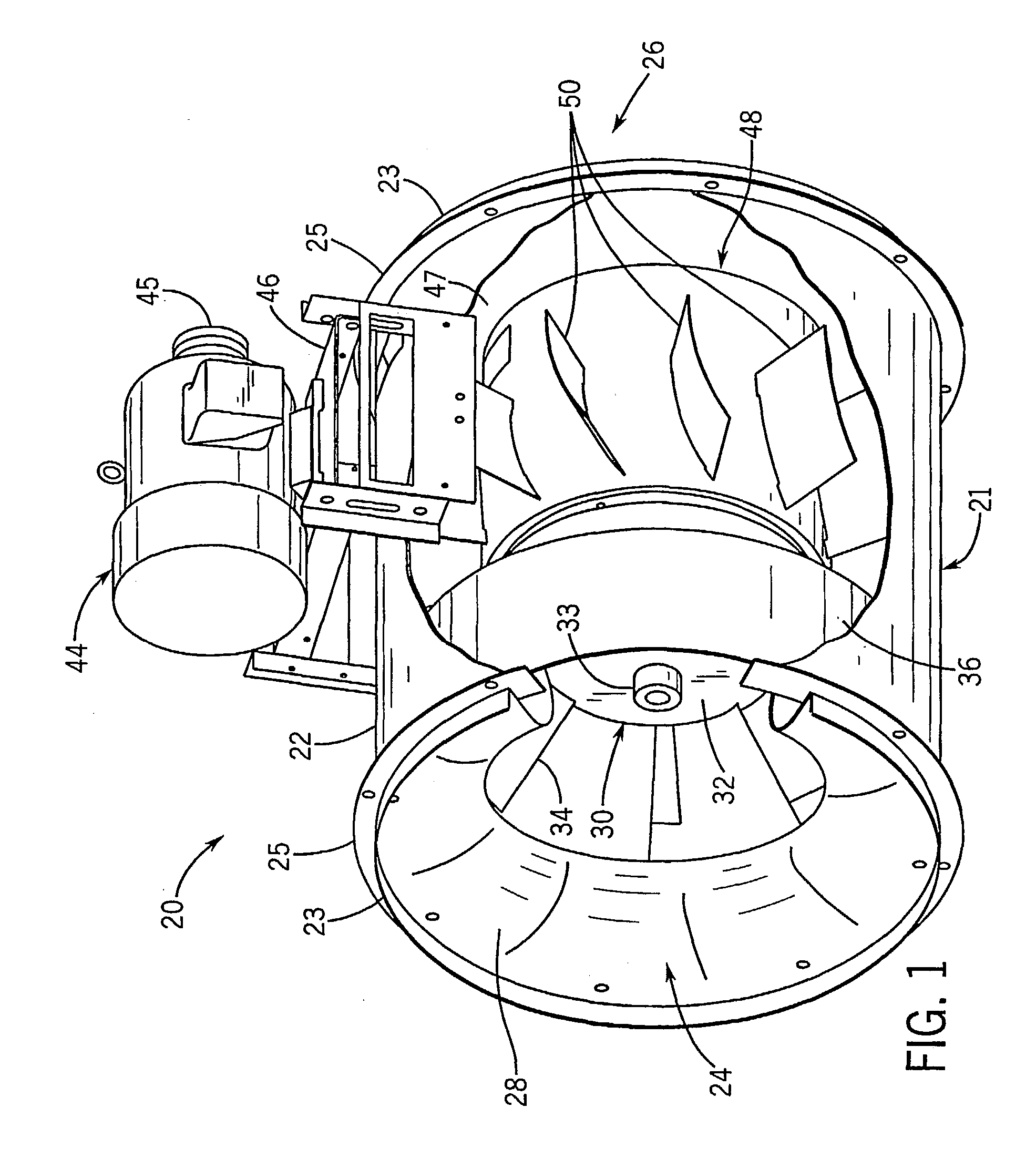In-line centrifugal fan
a centrifugal fan and inline technology, applied in the direction of marine propulsion, vessel construction, other chemical processes, etc., can solve the problems of affecting the service life of the fan, the need to reinstall non-modular moveable parts, and the limited internal drive components of the fan
- Summary
- Abstract
- Description
- Claims
- Application Information
AI Technical Summary
Benefits of technology
Problems solved by technology
Method used
Image
Examples
Embodiment Construction
1" 2" 3" CFM BHP Eff. DBA BHP Eff. DBA BHP Eff. dBA 4100 1.31 49% 67 2.13 61% 69 3.02 64% 70 6100 1.81 53% 69 2.92 66% 70 4.25 68% 72 13200 3.52 59% 70 5.98 69% 72 8.74 71% 74 20000 5.56 57% 74 9.14 69% 75 13.32 71% 76
[0053] Significant advantages are achieved by the present invention, as apparent when comparing Tables 1, corresponding to the prior art, and Table 2, corresponding to the present invention. For example, a fan constructed in accordance with the present invention achieves a reduced brake horsepower needed to achieve the same airflow compared to the prior art, thereby resulting in a significantly greater efficiency. Additionally, the present invention achieves a dramatic reduction in sound levels during operation at any given fan static pressure. For example, when operating at 4100 CFM with a one inch water gauge of fan static pressure, the present invention is 13 percentage points more efficient than the prior art, thereby conserving an appreciable amount of energy and ...
PUM
 Login to View More
Login to View More Abstract
Description
Claims
Application Information
 Login to View More
Login to View More - R&D
- Intellectual Property
- Life Sciences
- Materials
- Tech Scout
- Unparalleled Data Quality
- Higher Quality Content
- 60% Fewer Hallucinations
Browse by: Latest US Patents, China's latest patents, Technical Efficacy Thesaurus, Application Domain, Technology Topic, Popular Technical Reports.
© 2025 PatSnap. All rights reserved.Legal|Privacy policy|Modern Slavery Act Transparency Statement|Sitemap|About US| Contact US: help@patsnap.com



